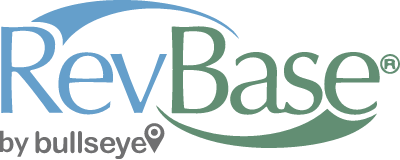The most common activities in a marketing asset management system are uploading and downloading digital assets. Of course, this is driven by the fact that most marketing programs are digital. However, there’s still significant functionality within a marketing asset management system that supports traditional print collateral, Print-on-Demand, and fulfillment of physical marketing materials.
In a marketing asset management system, we refer to users’ ability to order print and physical materials and then have those materials expedited through a warehouse or print facility as “fulfillment.”
For years, marketers have had print-oriented processes that allowed sales reps, distributors, and customers to request print materials. Consumers of marketing assets may have emailed or called a marketing contact, or used a simple web form to indicate the materials they wanted. Prior to email and the web, they typically completed a form and faxed or mailed it (as in postal mail) to the marketing department.
In these cases, an incoming request for print materials triggered someone in the mailroom, marketing department, or in a third-party fulfillment firm to go to shelves, physically pick and pack materials, and send them out. An industry, typically called “fulfillment services” was built around this essential marketing process.
The role of marketing asset management in fulfillment.
Today, many of the activities associated with print and physical fulfillment are done within the marketing asset management system. For example, the marketing asset management system offers a visual display of assets available for ordering, along with a shopping cart to collect one or more items of interest, set the quantity needed, and gather the specific ship-to address.
Rules-based ordering of materials.
However, marketers today want to be very cost-effective in their spending on print materials, so there’s a lot of functionality centered on reducing waste and making sure the right materials are delivered in the most efficient way to the people who need them. It’s now common for marketing asset management systems to offer robust eCommerce-style shopping carts with rules about what items can be ordered – all in the name of optimizing scarce budgets.
For example, there might be rules about ordering limits over a period of time. There might be items that have to be ordered in certain combinations or aren’t allowed to be ordered in combination with others. Users might need to provide certain information, whether it’s an internal billing code or credit card number, for orders to be treated as valid within the system.
In smaller marketing operations, the complexity associated with print fulfillment or Print-on-Demand is typically limited. A company might have 20, 30, or maybe 50 items they print and manage internally. At that volume range, they can internally manage printing and fulfillment of items from shelves. But most companies these days with reasonably complex product lines – and reasonably broad marketing reach – have outsourced printing and fulfillment to a third-party vendor. In these cases, the marketing asset management system needs to integrate with the warehouse system.
Benefits of integration.
Why is this integration important? Because integration enables digital transfer of orders and order status information from printers and fulfillment firms into the marketing asset management system. This information can then be presented to users. Marketers need to manage their inventory and know how many items they have on their shelves, what their reorder points are, and which assets are reaching their reorder points. So it’s common in a marketing asset management system to have reports, alerts, and notifications that provide the marketing department with insight into workflows, stock levels, and the need to reorder materials.
Managing distributed fulfillment.
In other cases, marketers need to manage distributed fulfillment. This means they’ve made their fulfillment regional or country-based, so materials are printed or inventoried within a given fulfillment location to serve a specific geography. For example, they might have a print location that serves Europe, warehouse locations that serve the United States, and a dedicated warehouse for Latin America. The marketing asset management system can collect orders from distributed users and then route them as appropriate to the nearest fulfillment locations, to be printed and shipped most economically.
A single view of the spending side.
Speaking of economics, because many marketers are keenly interested in managing their spending, it’s not uncommon to have prices, costs, and sometimes even invoices to printers managed within the marketing asset management system. This provides one place for the marketing team to get financial information associated with the materials they buy, print, and stock.
Beyond traditional print.
Physical fulfillment isn’t just about traditional print; it can also involve Print-on-Demand, where the order going to the print location includes the digital file to be printed. Managed within the marketing asset management system, the digital file accompanies the order, so the printer always prints the most recent version.
Physical fulfillment also includes assets such as trade show materials; posters; graphics; giveaways; demo units, gear, or equipment used for trade shows, conferences, exhibitions, seminars, and symposiums. All of these are marketing assets, and therefore, should be items in the marketing asset management system.
One other interesting aspect of fulfillment these days is the increased adoption of advanced forms of digital fulfillment. For example, a user adds five or six items – digital items – to their shopping cart, and then wants to make those items available to customers via email as a digital kit. The recipient can view those items – and then download them, perhaps comment on them, or even forward them. This is an extension of the traditional physical world brought into the digital world. We call this “electronic fulfillment.”
Electronic fulfillment functionality tends to be based on companies’ unique sales and communications models. Going forward, we expect to see increased use of electronic fulfillment by mainstream marketers.
To download our complimentary white paper, “10 Signs You Need Marketing Asset Management,” click here.

